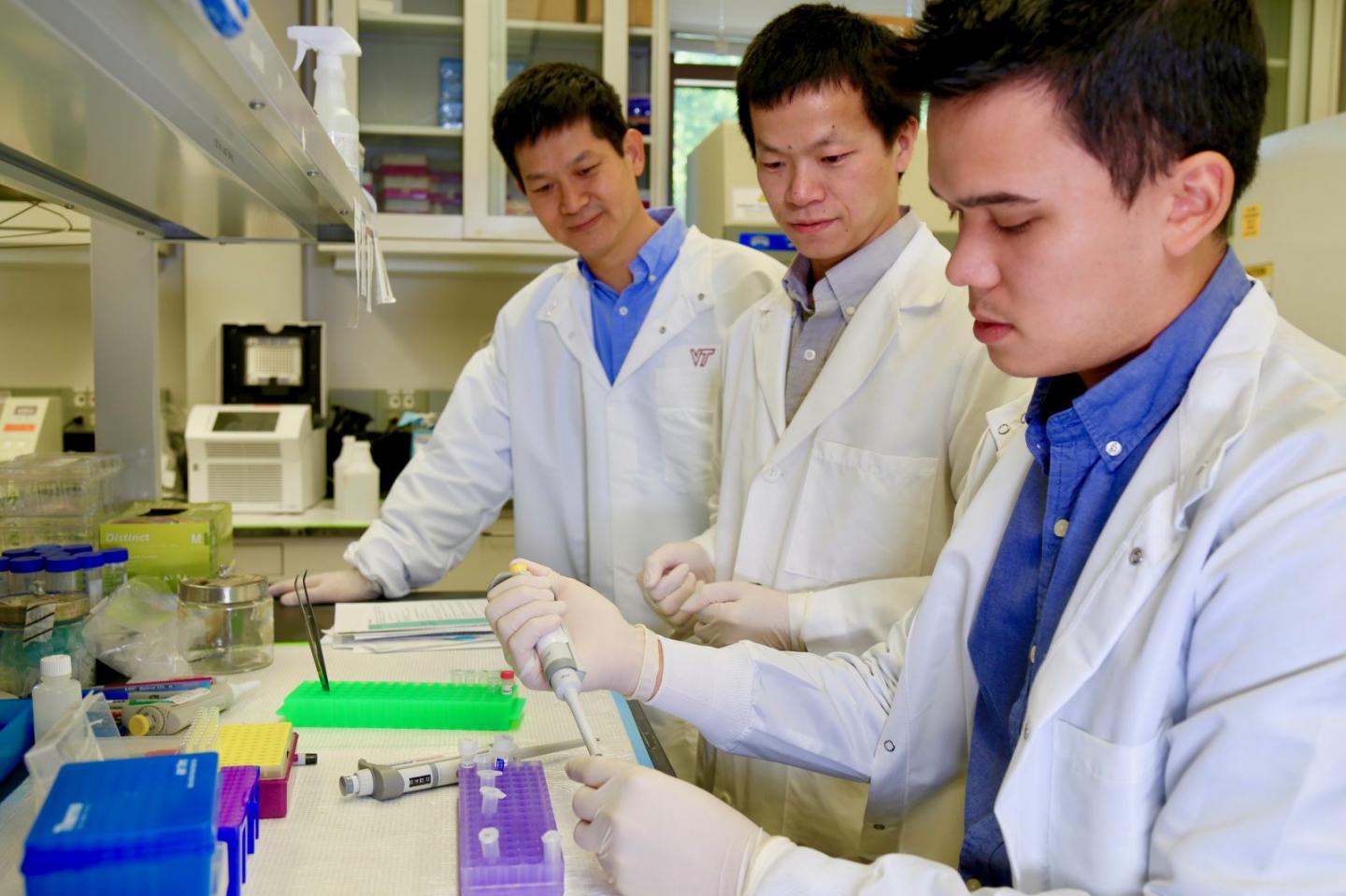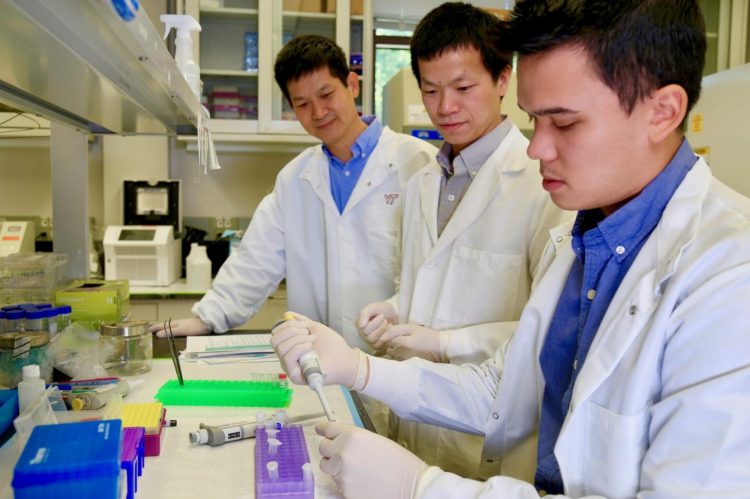
Credit: Virginia Tech
When we first purchase a smart phone, all of our settings and applications are the same. But as time passes, everyone’s phones will change drastically as we adapt them to our own individual needs and preferences. In the same way, our memories and life experiences are loaded into our brains, making one person unique from another.
Even the simplest experiences are altering our brains on a cellular level. Every time that we learn something new, our brain changes. Exactly how this information gets stored into our brains is still largely unknown — until now.
Hehuang “David” Xie, associate professor in the Department of Biomedical Sciences and Pathobiology in the Virginia-Maryland College of Veterinary Medicine, and his collaborators just published a new study in the journal Nature Communications.
In this study, Xie and his research team elucidated transcription factors and enzymes that control certain processes in the brain through the methylation of DNA.
With this new information, researchers will be able to learn more about long-term memory storage and the implications this may have for understanding Alzheimer’s disease and other disorders that result in memory loss.
“With each experience and learning processes, you have become programmed to become different people. It is fascinating to begin to understand how the learning process happens in the brain and how each new bit of information learned will make you a different you tomorrow,” said Xie, who is also an affiliated faculty member of the Fralin Life Sciences Institute.
This research is a collaboration across many laboratories at Virginia Tech, including Liwu Li, a professor in the Department of Biological Sciences in the College of Science; Jinsong Zhu, a professor in the Department of Biochemistry in the College of Agriculture and Life Sciences; Alexei Morozov, an assistant professor at the Fralin Biomedical Research Institute at VTC and the Department of Biomedical Engineering and Mechanics in the College of Engineering; Alicia Pickrell, an assistant professor in the School of Neuroscience in the College of Science; and Michelle Theus, an associate professor in the Department of Biomedical Sciences and Pathobiology in the Virginia-Maryland College of Veterinary Medicine.
Xie and his colleagues are meticulously looking at two components, Egr1 and TET1, which hypothetically team up to help us learn new things and form long-term memory. “Egr1 and the TET1 enzyme, it’s like a program that takes an input and stores it in your iPhone,” said Xie. In this case, the “input” is external sensory information and the “iPhone” is your brain.
Using mouse models, Xie looked at their frontal cortices, the primary brain region where learning is stored and where the brain is the slowest to mature. The researchers used a mouse model to do more-striking observations like the knockout of genes.
Egr1 is a transcription factor, which is a protein that helps transcribe DNA into RNA. Egr1 plays a vital role in long-term memory formation, and previous research has shown that when the transcription factor is knocked out of a mouse, memory loss results.
TET1 is an enzyme that is involved in active DNA demethylation. DNA methylation occurs when a methyl group is added to a DNA molecule, which then inhibits the promoter region of a gene. In other words, when DNA is methylated, genes cannot be expressed or activated.
Egr1 and TET1 are tasked with removing this methyl group so that gene expression can be activated and memories can be stored.
“There’s basically an ‘on’ or ‘off’ switch that controls our gene expression, or increases or decreases our expression levels. EGR1 is helping us to use this switching system so that when you receive an external stimulus, the genes will be expressed — and expressed more quickly. Now you’ve learned it; it’s already unmethylated, and now you can respond accordingly.”
Researchers are seeing that this Egr1-TET1 team-up could be a mechanism for learning that extends past the brain. For instance, there are similar “family members” to Egr1 and TET1 in the blood.
In the immune system, memory B cells and memory T cells are key for creating and maintaining immunological memory. They have the ability to remember the antigens of past invaders so that the next time they are under attack, they can initiate a rapid immunological response.
This process points to the possibility that other organs theoretically may be able to form memories. The gravity of this finding is significant in terms of learning. Is there a possibility that learning can change for the better? Can we change the education system to enhance learning?
Those questions are for Xie and his research team to explore.
“There are a lot of these fundamental things that we don’t know. For example, the markers and the gene switches: How can we identify them, and can we use these switches? Can that be used to monitor some disease? Can that be used to monitor specific events? I think there are so many things that are coming to us, and we just need to think about what we can do right now,” said Xie.
###
For future research, Xie is interested in learning more about how different types of neurons use different mechanisms to respond to external stimuli.
Media Contact
Kristin Rose
[email protected]
Original Source
https:/
Related Journal Article
http://dx.





